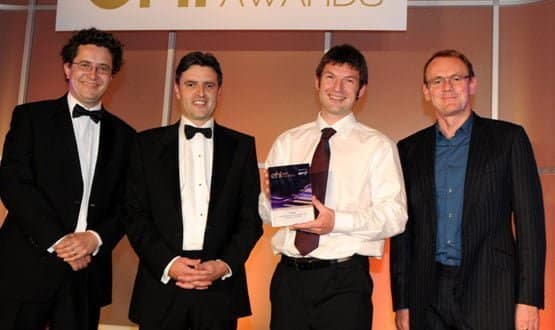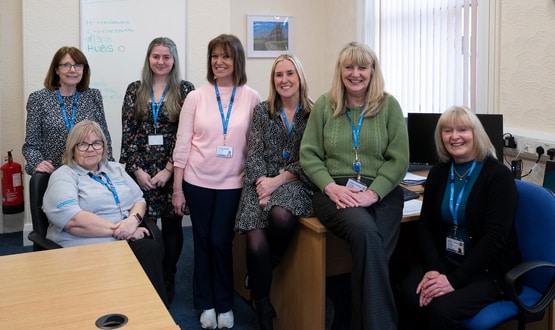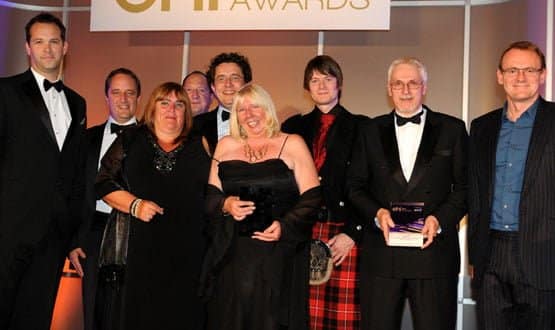EHI Awards 2011: Boxing clever
- 27 March 2012

Sit on a train travelling through Sefton and each stop steals a year from the life expectancy of the people living around it.
David Hammond, , NHS Sefton’s engagement officer, uses this vivid illustration of the area’s significant health inequalities to explain why the primary care trust’s Looking Local project is so important.
He says the project is all about using technology to get health information to the people who need it on whatever device suits them best; acknowledging that “one size doesn’t fit all.”
“It’s recognising that the most appropriate channel may not be the newest, but making best use of that which we all might be accustomed to,” he says.
Poor health, poor digital access
Sefton is an area of inequalities in both health and digital access. Those areas with the highest health inequalities and greatest need for information also have the lowest rates of internet access.
However, they have high levels of Sky and Virgin Media television subscriptions and it is this communication channel that Hammond’s team decided to take advantage of.
Around the same time, they also discovered Looking Local, formerly DigiTV, which started life as a national e-Gov project.
It uses a hosted content management system to allow organisations in local government, jobs, health and housing to create information hubs from which people can access content from websites through their television.
NHS Sefton became the first PCT to gain a TV presence and has worked with organisations like the British Heart Foundation and Diabetes UK to get information on the site. It links to content from websites such as NHS Choices, Jobcentre Plus and Transport Direct.
The site also connects with EMIS Access, so patients can book or cancel appointments at GP surgeries that use EMIS systems.
From the comfort of their couch, remote in hand, they can send e-mails to NHS Sefton through the TV and their query can be answered by e-mail or with a call-back.
TV, gaming and mobiles put to use
Hammond says that a small number of people with lifestyle related diseases make an awful lot of visits to hospital, so helping them to manage their condition and find help before they get there saves time and money.
“It’s crucial to be able to provide people with the information that’s going to be able to help them make the best choices.”
He also explains that Looking Local is easier to use than a website, which is great for Sefton’s older population, which is not all computer literate.
However, while it is compatible with TV, it can also be accessed via internet, mobile phone (as a WAP site), Nintendo Wii, and from a free app for iPhones.
The site gets around 2,500 hits per week, with many people spending significant amounts of time browsing it in the evenings, when they would not easily be able to see a professional face-to-face.
Hammond says mobile is the fastest growing channel. Smartphone users are likely to be younger and often use the site for sexual health advice.
An evaluation with COPD patients found 88% could access the site – even though 38% didn’t have internet – and all said it was easy to use.
Hammond says NHS Scotland has launched a similar project, and more than 80 local authorities in England are looking at using Looking Local.
Awards mean recognition
The idea for NHS Sefton to use Looking Local started to form in 2009, when assistant chief executive Barbara Strong attended a workshop on the service.
“She had in her mind for some time that we were doing quite a lot over the Internet, but there were people out there who we weren’t reaching,” says Hammond.
NHS Sefton’s site was launched in January 2010, with funding of about £25,000. Tight NHS budgets meant Strong and project support officer Florence Collins could not attend the EHI Awards in London last year, when the project won the ‘best use of social media’ category.
However, Hammond says there were “lots of texts flying around” and the team was “just really pleased” to be recognised for its work.
“I was surprised to win, not because I don’t think it’s a great service, but because when people think of social media it tends to be web-based applications like Facebook.”
Winning an EHI award attracted plenty of attention to the project and lots of messages of congratulations. It prompted invitations to speak at a national conference and to the strategic health authority, which is using it as a case study of best practice.
“It’s funny how you can do loads of good work, but there’s something about winning an award and getting the recognition for that which suddenly puts the spotlight on you,” Hammond concludes. “It presents you with more opportunities to show what you have been doing and share your ideas.”

To enter an award category, reserve a table, or for more information on the EHI Awards 2012 in association with BT please visit the Awards section of the website.




